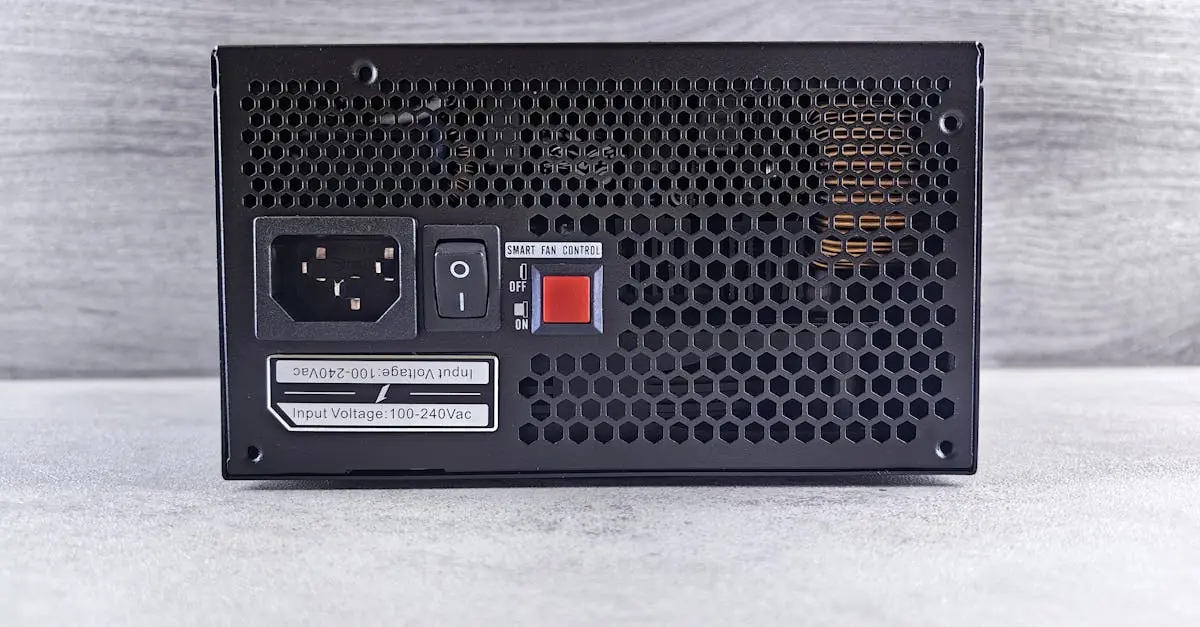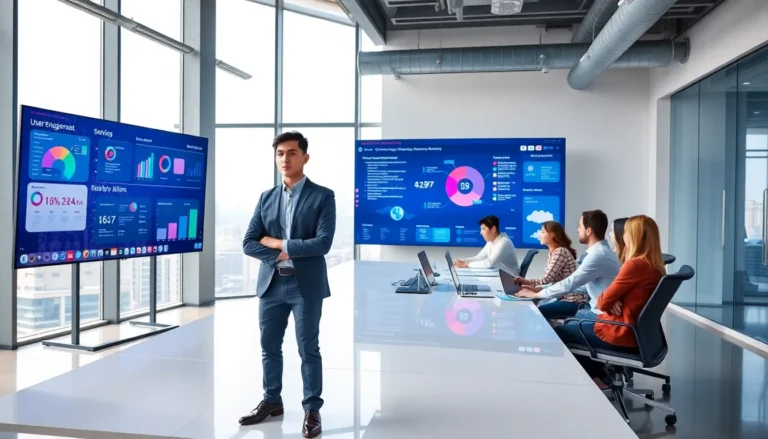Table of Contents
ToggleKeeping the electric grid running smoothly is no small feat. It’s like trying to juggle flaming torches while riding a unicycle—exciting but risky! A well-maintained grid is crucial for powering homes, businesses, and that all-important morning coffee. Without proper upkeep, things can go haywire faster than you can say “outage.”
Importance Of Electric Grid Maintenance
Electric grid maintenance plays a crucial role in ensuring reliable energy supply. Regular inspections help identify potential issues before they escalate into outages. Efficient maintenance reduces the risk of equipment failure, enhancing overall grid stability.
Investment in grid infrastructure correlates directly with minimizing service disruptions. Well-maintained components, including transformers and substations, contribute to an improved performance. Routine servicing of lines and connections aids in maintaining optimal energy flow.
Quality maintenance practices extend the lifespan of grid equipment. Proactive approaches, like thermal imaging and sound analysis, detect problems that might not be visible. These technologies enable early interventions, preventing costly repairs.
Systematic maintenance fosters safety for personnel and the public. Proper protocols reduce the chance of accidents related to electrical failures. Additionally, a reliable grid supports economic stability, allowing businesses to operate efficiently.
Monitoring and analyzing performance data informs maintenance schedules. Identifying patterns in power consumption highlights where improvements are necessary. Implementing data-driven strategies leads to a more resilient network.
Collaboration among utilities enhances the effectiveness of maintenance efforts. Sharing best practices and resources allows for better preparedness against extreme weather events. Consistent communication ensures all teams are aligned in their maintenance goals.
Overall, prioritizing electric grid maintenance safeguards against disruptions and ensures continued access to electricity for all users.
Key Components Of Electric Grid
Electric grid maintenance relies on several key components working together. Understanding these elements ensures effective upkeep and enhances overall reliability.
Power Lines
Power lines transmit electricity from generation sources to substations and consumers. Regular inspections reveal wear, corrosion, and vegetation encroachment on these lines, which can lead to outages. Maintaining proper clearance around power lines prevents disruptions. Insulating materials should undergo routine checks to ensure they are not compromised. Additionally, monitoring weather-related stress helps mitigate risks during storms or high winds.
Substations
Substations play a critical role in converting high-voltage electricity for distribution. Visual inspections should focus on equipment condition, cleanliness, and security measures. Equipment failures can cause significant outages, making preventive measures essential. Performing maintenance on busbars, circuit breakers, and transformers can extend their lifespan. Routine testing of protective relays and communication systems ensures they function properly, enhancing grid reliability.
Transformers
Transformers facilitate voltage conversion, adapting it to user needs. Regular checking of oil levels and monitoring for leaks is vital for optimal performance. Cleaning transformer parts and conducting insulation resistance tests help identify potential issues early. Connection checks, including terminals and grounding systems, prevent failures. Implementing thermal imaging can spot hotspots, allowing for timely interventions before resulting in costly outages.
Electric Grid Maintenance Checklist
Effective electric grid maintenance ensures reliability and minimizes outages. The following categories highlight essential tasks for grid upkeep.
Routine Inspections
Routine inspections are vital for identifying potential problems before they escalate. Inspectors check power lines for wear and clear vegetation that might obstruct transmission. Substations require regular visual assessments to monitor equipment conditions. Thermal imaging detects hotspots indicating possible failures. Regular checks on transformers for oil levels and insulation resistance contribute significantly to performance. Implementing a schedule for routine inspections enhances stability across the grid.
Equipment Testing
Equipment testing guarantees that all components function optimally. Technicians perform voltage and current tests on transformers to ensure proper voltage conversion. Making use of load banks, professionals simulate electrical loads to evaluate system responses. Insulation resistance tests help identify deterioration in cables. Testing circuit breakers determines their operational reliability under load conditions. Reliable equipment testing methods support a well-functioning electric grid.
Vegetation Management
Vegetation management prevents interference with power lines and promotes safety. It includes trimming trees and clearing brush along right-of-ways. Regular assessments identify potential growth threats to transmission lines. Effective vegetation management practices also consider the types of plants that pose risks. Controlling vegetation ensures that power delivery remains uninterrupted. Implementing robust management strategies enhances both safety and reliability for the electric grid.
Recommended Tools And Technologies
Efficient electric grid maintenance relies on the right tools and technologies. Proper equipment facilitates effective inspections and enhances safety for personnel.
Monitoring Software
Monitoring software plays a vital role in electric grid maintenance. These solutions collect real-time performance data from grid components. Anomalies can be detected quickly, allowing for timely maintenance. Utilities often rely on advanced analytics to predict issues before they escalate. Integrating geographic information system (GIS) technology further enhances visualization of grid health and performance. With robust tracking capabilities, maintenance teams can budget and schedule tasks efficiently.
Safety Equipment
Safety equipment ensures the protection of personnel during maintenance operations. High-quality insulated tools prevent electrical accidents when working on live equipment. Personal protective equipment (PPE) like hard hats, gloves, and safety goggles protects workers from hazards. First aid kits should be easily accessible on-site for emergency situations. Safety harnesses and fall protection systems are critical for work at elevated locations such as transmission towers. Investing in comprehensive safety training enhances general awareness and reduces the risk of incidents.
Challenges In Electric Grid Maintenance
Maintaining an electric grid presents various challenges that can jeopardize reliability. Equipment aging contributes significantly to issues, making regular inspections crucial. Insufficient investment in infrastructure often leads to deferred maintenance, increasing the risk of outages.
Weather conditions exacerbate these challenges. Severe storms and extreme temperatures can damage power lines and substations, necessitating rapid response and repairs. Operators face difficulties in predicting these events, complicating maintenance schedules.
Human error also plays a role in maintenance challenges. Personnel fatigue from demanding schedules may lead to oversight during inspections. Ensuring adequate staffing and training is essential for mitigating this risk.
Coordination among utilities becomes another hurdle, especially during joint maintenance projects. Effective communication between agencies ensures that resources are allocated efficiently, reducing downtime. Collaboration can streamline efforts to address weather-related damage.
Emerging technologies bring both opportunities and challenges. While monitoring software enhances data collection and performance tracking, integrating these new tools requires significant investment and training. Adapting to technological advancements demands flexibility from maintenance teams.
Regulatory compliance adds another layer of complexity. Utilities must navigate constantly evolving regulations regarding safety and environmental standards, which can impact maintenance practices. Keeping abreast of these changes is essential for maintaining operational integrity.
Finally, public perception influences maintenance prioritization. Negative feedback from service interruptions can lead to pressure on utilities to address issues promptly. Prioritizing customer satisfaction while maintaining infrastructure poses a constant balancing act for operators.
Conclusion
Prioritizing electric grid maintenance is vital for ensuring reliable power delivery. A well-maintained grid not only reduces the risk of outages but also enhances safety and promotes economic stability. By implementing a comprehensive maintenance checklist and utilizing advanced technologies, utilities can proactively address potential issues.
Collaboration among utilities further strengthens maintenance efforts, especially during extreme weather events. As the challenges of aging infrastructure and regulatory compliance persist, a commitment to ongoing investment and training will be crucial. Ultimately, a robust maintenance strategy fosters a resilient electric grid that meets the needs of homes and businesses alike.








